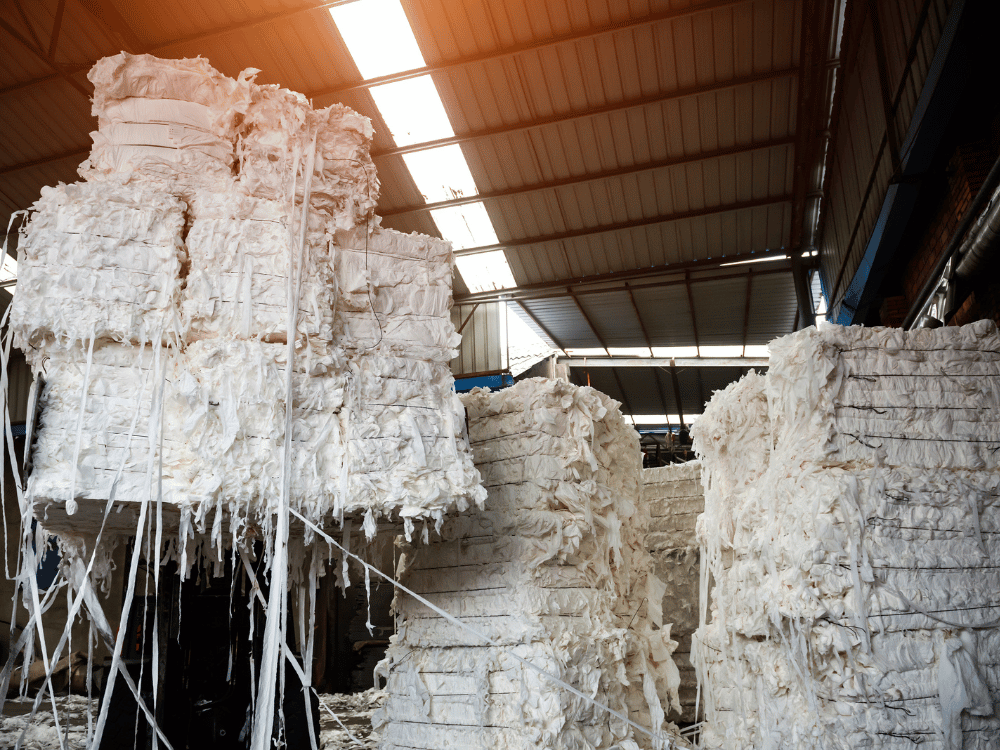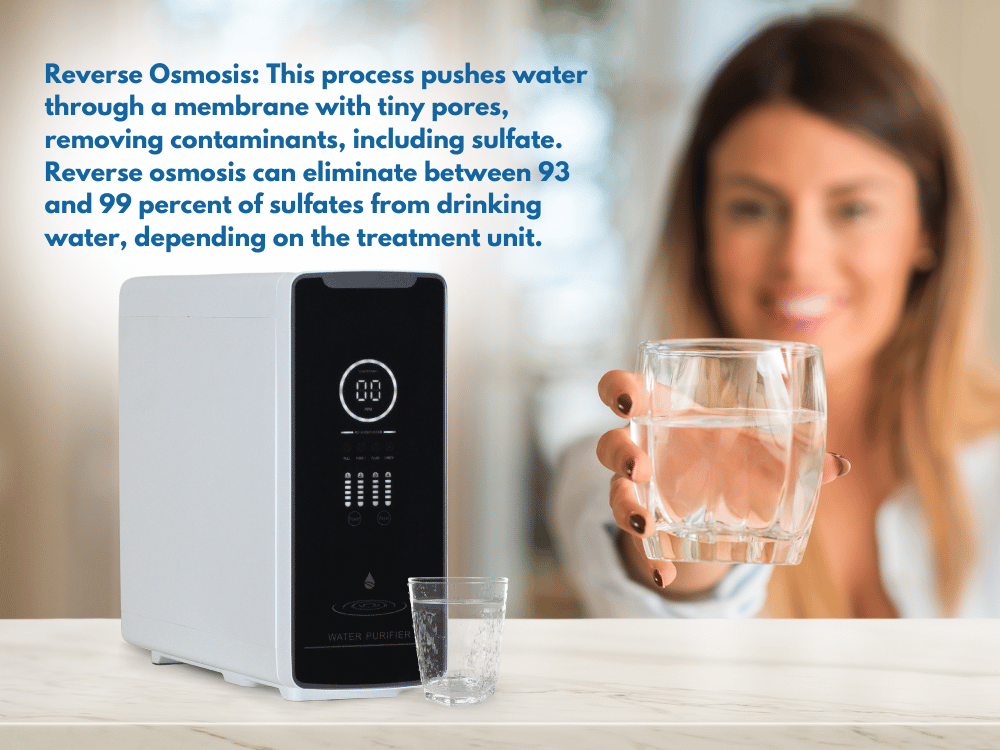Sulfate, a naturally occurring substance, can be found in drinking water sources around the world. While sulfate itself is not considered a primary health threat, there have been concerns regarding its potential effects on human health. These concerns include its association with diarrhea when consumed in high concentrations. This article sheds light on these concerns and the populations most at risk.
Health Risks for Humans
Diarrhea and Dehydration
People who are not accustomed to drinking water with high sulfate levels can experience diarrhea and dehydration when drinking such water. Infants are particularly sensitive to sulfate, making it essential to use water with sulfate levels lower than 500 milligrams per liter (mg/L) to prepare infant formula.
Taste and Odor: High sulfate levels in water can alter its taste and odor, making it less palatable or even bitter or medicinal. This can affect the overall drinking experience.
Sulfate in drinking water at concentrations exceeding 500-700 mg/liter causes diarrhea
Currently, sulfates in drinking water are regulated by the Secondary Maximum Contaminant Level (SMCL), which is set at 250 milligrams per liter (mg/L).
Approximately 3% of public drinking water systems in the United States may have sulfate levels exceeding this limit.

Major Uses of Sulfate
- Sulfates and sulfuric acid products find applications in many industries. They are employed in producing fertilizers, chemicals, dyes, glass, paper, soaps, textiles, fungicides, insecticides, astringents, and emetics.
- These versatile compounds also play significant roles in the mining, wood pulp, metal, and plating industries.
- Sulfate compounds are used in sewage treatment and leather processing. Notably, aluminum sulfate (alum) is employed as a sedimentation agent in drinking water treatment, and copper sulfate is utilized for controlling algae in raw and public water supplies.
Environmental Fate of Sulfates
Sulfates are discharged into water from various industrial processes, including mines, smelters, kraft pulp and paper mills, textile mills, and tanneries.
The solubility of different sulfate compounds varies, with sodium, potassium, and magnesium sulfates being highly soluble in water. In contrast, calcium and barium sulfates and several heavy metal sulfates are less soluble.
Sulfur dioxide, formed from fossil fuel combustion and metallurgical roasting processes, contributes to surface waters’ sulfate content.
Sulfur trioxide, produced by the photolytic or catalytic oxidation of sulfur dioxide, combines with water vapor to form dilute sulfuric acid. This falls as “acid rain.”
Air
In the USA, nationwide surveys recorded sulfate concentrations in air ranging from 0.5 to 228 µg/m³, with varying means. The average daily intake of sulfate from the air is estimated to be 0.02-0.63 mg.
Food
Data on foodstuff sulfate content are limited, but sulfates are used as additives in the food industry. The estimated average daily intake of sulfate in food in the USA is around 453 mg, with sulfites and sulfides also present in food.
The average daily intake of sulfate from drinking water, air, and food is approximately 500 mg, with food being the major source.

Removal of sulfates
To address elevated sulfate levels in drinking water, several treatment systems are available:
- Reverse Osmosis: This process pushes water through a membrane with tiny pores, removing contaminants, including sulfate. Reverse osmosis can eliminate between 93 and 99 percent of sulfates from drinking water, depending on the treatment unit.
- Distillation: This method involves boiling water, creating steam, and leaving contaminants, such as sulfates, behind. When operated correctly, distillation removes nearly 100 percent of sulfate.
- Anion Exchange: This common method is used for removing large quantities of sulfate from commercial, livestock, and public water supplies but is not typically employed for individual household water treatment. It involves replacing negatively charged ions, like sulfates, with sodium chloride or potassium chloride (salts).
The Life Sciences Reverse Osmosis Alkaline Water Purifying Generator, featuring tankless technology, offers a state-of-the-art solution for removing sulfates and enhancing water taste. This under-counter system efficiently removes up to 98% of contaminants in your drinking water, creating mineralized alkaline water with over 40 health benefits and a fresh, delicious taste.
Plus, the included free bonus Borosilicate Glass Water Pitcher allows you to create a variety of infused alkaline beverages. Say goodbye to frequent filter replacements, as the system’s filters and membranes are designed to last 6 months.
for more information visit this link
Importance of Well Water Testing
Besides sulfates, well water can be contaminated by various other substances, both from natural sources and human activities. Many of these contaminants are invisible through taste, smell, or appearance.
Life Water Report offers a valuable service by providing free water analysis reports. This helps individuals understand the contaminants, including sulfates and other toxic chemicals, in their drinking and household water.
With over 27 years of experience in the water treatment industry, Life Water Report educates people about the health risks associated with these contaminants.
Get your free report to discover what’s really in your water and how it impacts your health.
Conclusions
Sulfate in drinking water can cause a noticeable taste, with taste thresholds around 250 mg/liter. While no health-based guideline value for sulfate in drinking water is proposed, it is essential to monitor sulfate levels, especially in regions where taste concerns may arise.
Take the first step in creating a healthier environment for your Family. Visit our website Click HERE
REFERENCES
- Backer L (2000) Assessing the acute gastrointestinal effects of ingesting naturally-occurring high levels of sulfate in drinking water.
- CRC Reviews in Clinical Laboratory Sciences, 37(4):389–400. Backer LC et al. (2001) Assessing acute diarrhea from sulfate in drinking water.
- Journal of the American Water Works Association, 93:76–84. Chien L et al. (1968) Infantile gastroenteritis due to water with high sulfate content.
- Canadian Medical Association Journal, 99:102–104. Cocchetto DM, Levy G (1981) Absorption of orally administered sodium sulfate in humans. Journal of Pharmaceutical Sciences, 70:331–333.
- Backer L. C. (2000). Assessing the acute gastrointestinal effects of ingesting naturally occurring, high levels of sulfate in drinking water. Critical reviews in clinical laboratory sciences, 37(4), 389–400. https://doi.org/10.1080/10408360091174259
- Andres, C. J., & Cline, T. R. (1989). Influence of sulfate in drinking water on mouse reproduction during two parities. Journal of animal science, 67(5), 1313–1317. https://doi.org/10.2527/jas1989.6751313x
- Heizer, W. D., Sandler, R. S., Seal, E., Jr, Murray, S. C., Busby, M. G., Schliebe, B. G., & Pusek, S. N. (1997). Intestinal effects of sulfate in drinking water on normal human subjects. Digestive diseases and sciences, 42(5), 1055–1061. https://doi.org/10.1023/a:1018801522760
